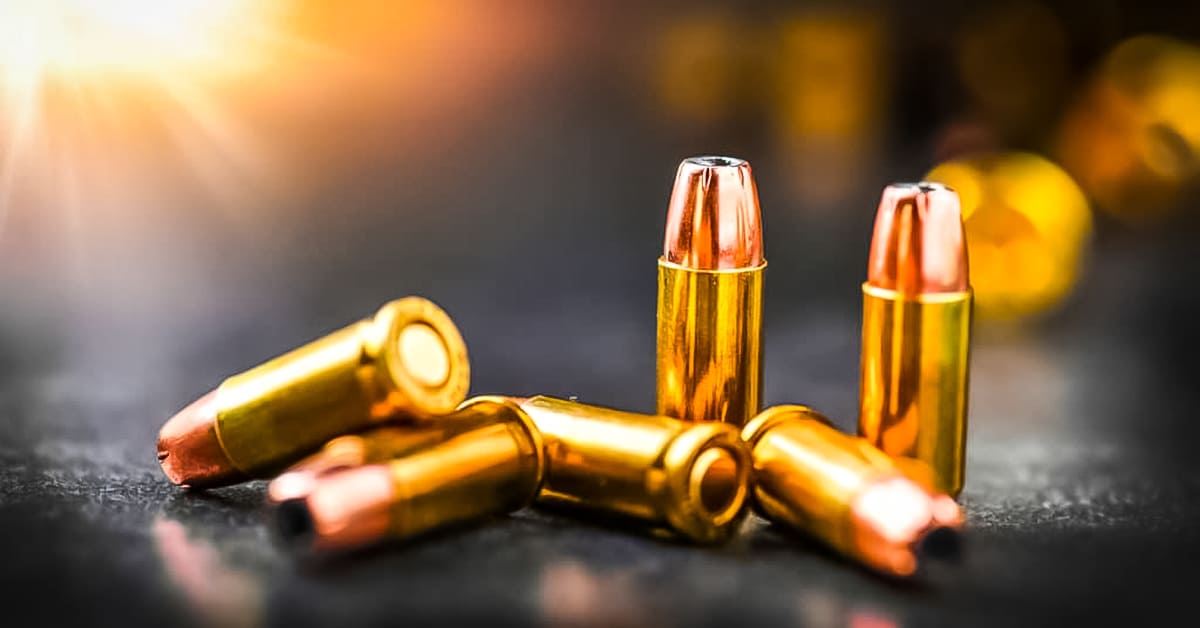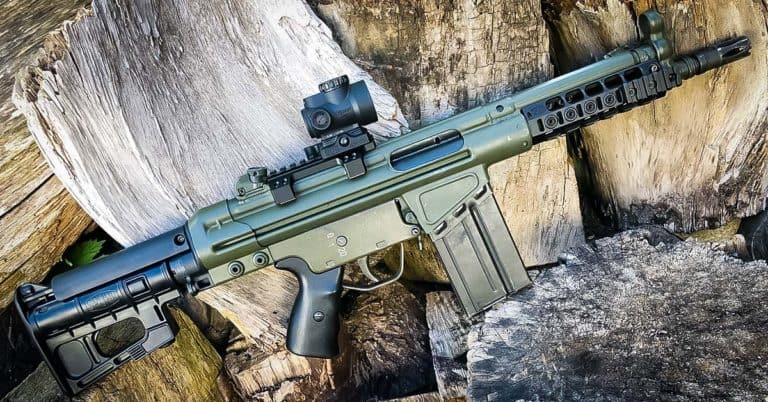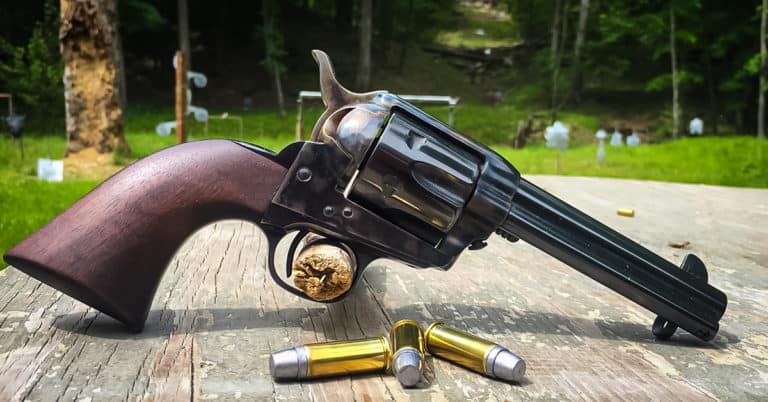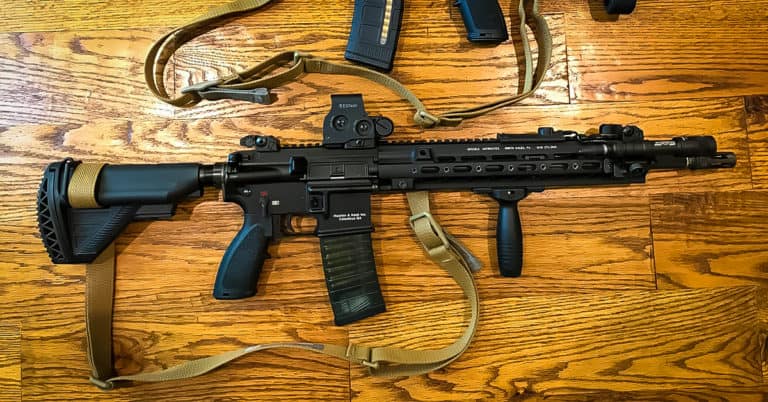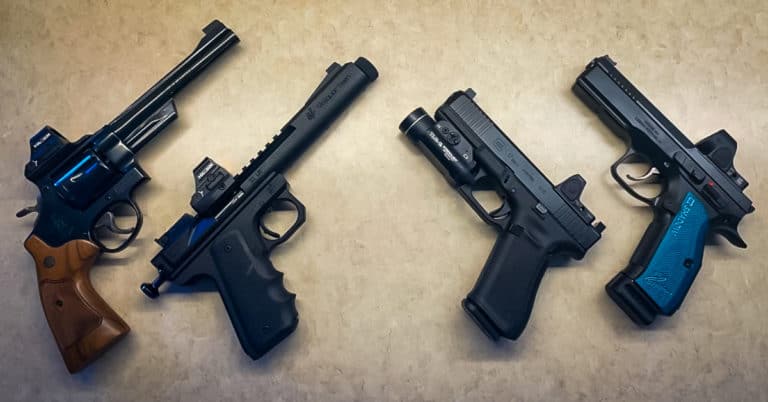Rimfire vs Centerfire (Difference Explained)
If you’re wondering about the differences between centerfire and rimfire ammunition, you’re not alone. These two ammo types are defined by how the firing pin initiates the primer compound.
In the case of rimfire ammunition, the firing pin strikes the cartridge’s rim to fire the round. The primer compound is inside the cartridge’s rim and ignites when the firing pin hits it.
While with centerfire ammunition, the firing pin strikes an externally visible primer located at the center of the base of the cartridge to ignite the round. The primer compound is situated at this central location.
Even if you cannot fully understand it, don’t worry.
This post will provide a detailed understanding of the distinctions between these two types of ammunition.
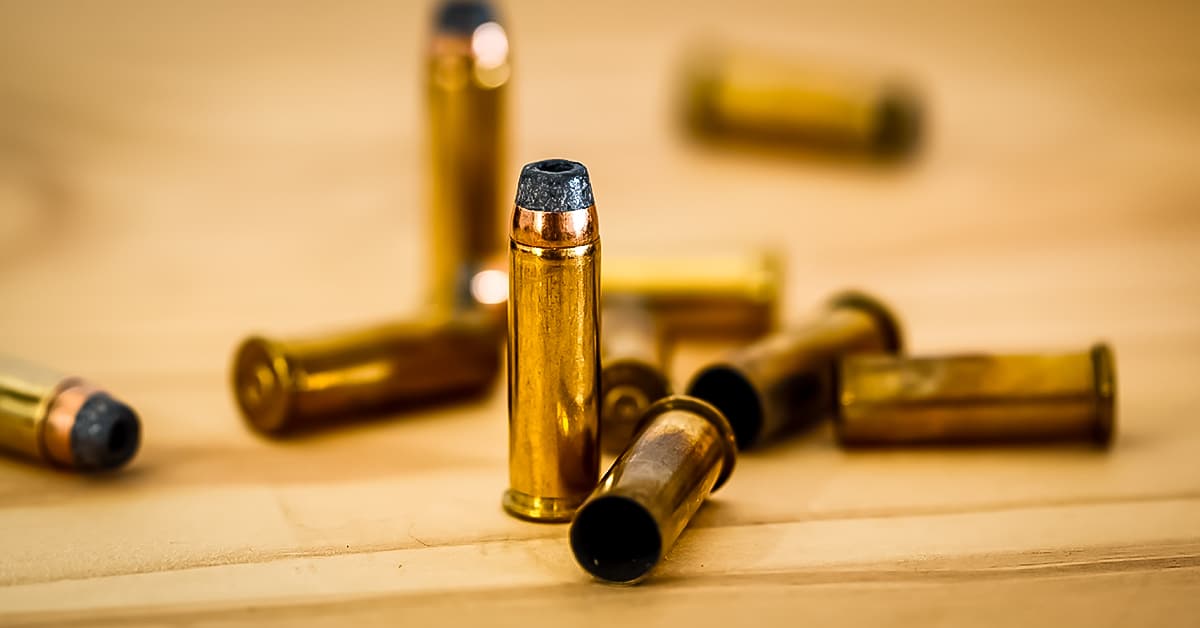
Parts of a Cartridge
A cartridge, also known as a round, is made up of four main components: a case, primer, propellant, and bullet.
It’s worth mentioning that when we say “bullet” we only refer to the projectile, not the whole cartridge. And these four elements are present in both rimfire and centerfire ammunition.
This creates a small spark which then sets off the gunpowder. This causes the bullet to be propelled forward and out of the gun barrel.
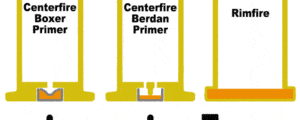
The main difference between rimfire and centerfire ammunition is where the primer is located.
Just as the name suggests, Rimfire primer is located in the rim, and Centerfire primer is located in the center.
Even though this small difference doesn’t seem to be much, it does make a huge impact in how the round operates. And that’s why it’s important to understand it.
Centerfire vs. Rimfire Appearance
One of the easiest ways to differentiate between centerfire and rimfire ammunition is to check the location of the primer. Centerfire ammunition usually has a visible primer in the center of the base of the cartridge, which is easy to spot. If you see a circular primer in the center of the casing, it’s most likely centerfire ammunition.
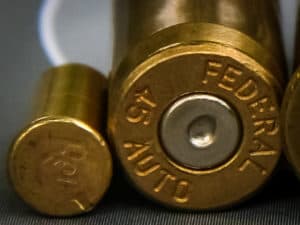
On the other hand, if you see a smaller cartridge with no apparent primer, it’s likely a rimfire cartridge. The primer in this case is located inside the rim of the cartridge, making it harder to spot.
So, if you’re wondering whether the ammo you have is centerfire or rimfire, you have to take a look at the primer’s location, and you’ll know which one it is.
Different Ignition Systems
When you take a closer look at the ignition systems, you’ll realize that the names “rimfire” and “centerfire” actually make a lot of sense.
Rimfire ammunition gets its name from the fact that the firing pin strikes the “rim” of the cartridge to ignite the primer compound which is located inside the rim.
On the other hand, centerfire ammunition is where the firing pin strikes the primer that is located at the “center” of the base of the cartridge.
You can see this in action by looking at the firing pin marks on the spent brass casing. In the case of centerfire, you can see the firing pin mark at the center of the base while in rimfire you’ll see the firing pin mark on the rim of the cartridge.
What is Centerfire Ammo?
Centerfire ammunition was invented before rimfire ammunition and is more commonly used in military, police, and civilian defense loads.
It has many different calibers available like 9mm for handguns and 5.56/.223 for rifles. It offers more reliable and consistent performance compared to rimfire ammunition.
What is Rimfire Ammo?
Rimfire ammunition was invented after centerfire ammunition and is less commonly used in comparison. Rimfire ammunition is primarily used for recreational shooting and small-game hunting.
It has a limited number of calibers compared to centerfire ammunition, mostly 22 caliber is the commonly used rimfire cartridge.
Rimfire ammunition is known for being less reliable and consistent than centerfire ammunition.
Why Use Centerfire Ammo?
Centerfire ammunition is widely used because of its many benefits. First and foremost, it is known for its reliability and consistent performance. The primer compound is located in the center of the cartridge’s base, making it more dependable than rimfire ammunition.
Centerfire ammunition is also widely available in various calibers, from 9mm for handguns to 5.56/.223 for rifles, which makes it ideal for many different types of firearms.
This versatility is particularly useful for hunting and long-range shooting, where various caliber options are needed to take down different types of game effectively.
Centerfire ammunition is also preferred for self-defense purposes, as it has a higher energy transfer that can cause more damage to a target. It is also commonly used by military and police forces.
Centerfire ammunition is preferred because of its reliability, consistent performance, versatility in caliber options, and suitability for hunting, long-range shooting, and self-defense.
Why Use Rimfire Ammo?
Rimfire ammunition has its own set of benefits that make it a popular choice for certain applications. The first benefit is its low cost, as rimfire ammunition is typically cheaper to produce compared to centerfire ammunition. This makes it an ideal option for recreational shooting, plinking, and small-game hunting.
Additionally, rimfire ammunition is known for being quieter than centerfire ammunition. This makes it a great option for backyard target shooting, where noise level can be a concern. It is also a great option for indoor ranges where the noise level is restricted.
Rimfire ammunition also has a limited recoil which makes it a great choice for novice shooters, children, and people with recoil sensitivity.
Rimfire ammunition is used for its low cost, for backyard and indoor target shooting, for small game hunting, and for novice shooters who are sensitive to recoil.
The .22LR rimfire cartridge is also a popular choice among “preppers” because it is more affordable and lighter to carry than centerfire ammunition. Additionally, it is possible to store a larger quantity of rimfire ammo compared to centerfire.
Related Articles
Rimfire vs. Centerfire: Which is Better?
It’s difficult to say which type of ammunition, rimfire or centerfire, is “better” as it depends on the intended use and personal preferences.
Centerfire ammunition is generally considered more powerful and suitable for self-defense due to its higher pressure and velocity.
Rimfire ammunition, on the other hand, tends to have less recoil and is typically less expensive. Furthermore, Rimfire rounds are smaller and can hold more rounds compared to centerfire.
For hunting small game, target practice, or recreational shooting, Rimfire might be a good choice as it’s less expensive and the recoil is less. However, for self-defense or long-range shooting, centerfire is often preferred.
In the end, it’s a matter of personal preference, and both types of ammunition have their own unique advantages and disadvantages.
Common Types of Rimfire Ammo
Some of the most common types of rimfire ammunition include:
- .22 Long Rifle (LR): This is the most popular rimfire cartridge in the world, known for its low recoil, low noise and accuracy.
- .17 HMR (Hornady Magnum Rimfire): This round is known for its high velocity and flat trajectory, making it ideal for varmint and small game hunting at long distances.
- .22 WMR (Winchester Magnum Rimfire): This round has a larger case and higher velocities than the .22 LR, and is better suited for medium-sized game and longer-range shooting.
- .22 Short: This is a less common round with a shorter case and lower velocities than the .22 LR, but is still used for shooting and target practice.
- .17 Mach 2 (M2): This is a high-velocity round that is used for varmint and small game hunting, and long-range shooting.
These are just a few examples of the many types of rimfire ammunition available. Each type of cartridge is designed for specific uses, and you will choose the one that best fits your need based on the activity you want to use it for and your personal preference.
Pros & Cons of Rimfire Ammo
Pros
There are several benefits to using rimfire ammunition, including:
- Affordability: Rimfire ammunition is generally less expensive than centerfire ammunition, which can make it a great option for those on a budget or for those who like to shoot frequently.
- Low Recoil: Rimfire rounds typically have less recoil than centerfire rounds, which can make them more comfortable to shoot, especially for beginners or those who are sensitive to recoil.
- Versatility: Rimfire ammunition comes in a variety of calibers and is suitable for a wide range of activities such as target shooting, small game hunting, and even some forms of self-defense.
- Low Noise: Rimfire ammunition is known to be less noisy compare to centerfire ammo, which makes it an excellent choice for plinking or shooting in urban or suburban areas where noise levels need to be kept low.
- Easy to find: Rimfire ammunition is widely available and easily found in most gun stores or online retailers
It’s worth noting that Rimfire ammunition’s effectiveness is limited by the caliber, size, and power of the round, which means it’s not suitable for certain use cases such as big game hunting and long-range shooting.
However, for a wide range of applications, rimfire ammo can be a great choice thanks to its versatility, affordability, and low recoil it offers.
Cons
There are several potential drawbacks to using rimfire ammunition:
- Limited power: Rimfire cartridges are generally less powerful than centerfire cartridges, which means they may not be suitable for certain types of shooting (such as long-range or large game hunting).
- Limited caliber options: Rimfire cartridges are available in a limited range of calibers, so you may not be able to find the exact caliber you need.
- Less reliable ignition: Rimfire cartridges rely on a thin rim around the base of the cartridge to ignite the primer, which can be less reliable than the more robust centerfire ignition system. This can lead to misfires or other issues.
- Less accurate: Rimfire ammunition is generally less accurate than centerfire ammunition, which can be a disadvantage for certain types of shooting.
While rimfire ammunition has its uses, it may not be the best choice for all shooting situations.
Final Considerations
Regarding rimfire and centerfire ammunition, there are a few key differences to keep in mind.
Rimfire ammunition is typically less expensive and has a smaller projectile. It is also more common for use in target shooting and small game hunting. Rimfire cartridges are made from a soft metal and are more sensitive to changes in temperature and humidity which can affect their accuracy.
On the other hand, centerfire ammunition has a larger projectile and is typically more powerful. It is more commonly used for hunting larger game and self-defense. Centerfire cartridges are usually made of harder metal and less affected by temperature and humidity changes.
Both types of ammunition have their advantages and disadvantages, and it depends on the specific use case and the user’s preferences.
Rimfire ammunition is a great option for those on a budget or just starting out with shooting, while centerfire ammunition is a better choice for those who need more power and accuracy.
In conclusion, both Rimfire and Centerfire ammunition have their specific uses and advantages, it’s up to the shooter to choose which one is best for their need.
Rimfire vs Centerfire FAQ
What is the difference between rimfire and centerfire ammunition?
Rimfire ammunition has a smaller projectile and is typically less expensive. Centerfire ammunition has a larger projectile and is more powerful.
Is rimfire ammunition suitable for hunting large game?
Rimfire ammunition is typically more suitable for small game hunting and target shooting, whereas centerfire ammunition is better suited for hunting larger game.
How does the primer in centerfire ammunition affect accuracy?
Because the primer in centerfire ammunition is located in the center of the base of the cartridge, it is less affected by changes in temperature and humidity, which can lead to more consistent accuracy.
Which one is cheaper to buy, rimfire or centerfire ammunition?
Rimfire ammunition is usually less expensive than centerfire ammunition.
Can rimfire ammunition be used for self-defense?
While rimfire ammunition is not as powerful as centerfire ammunition and therefore is not as well-suited for self-defense, it can still be used in certain situations where power is not as important as accuracy and noise reduction.
Further reading on Firstworldcrusader.com: Are you interested in learning more about guns and gear?
This list of the Best Red Dot Sights can help you choose the best optic for your rifle.
In addition, here are the Best AR-15 Upgrades & Accessories that can help you get more out of your primary battle rifle.

